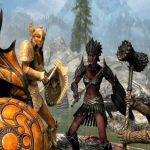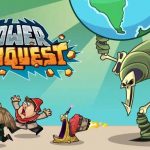Chimpanzees don’t automatically know what to do when they come across nuts and stones. Researchers at the University of Zurich have now used field experiments to show that wild chimpanzees thus do not simply invent nut cracking with tools, but need to learn such complex cultural behaviors from others. Their culture is therefore more similar to human culture than often assumed.
Cracking Wild Chimpanzee Culture
Humans have a complex culture that enables them to copy behaviors from others. As such, human culture is cumulative, since skills and technologies accumulate over generations and become increasingly efficient or complex. According to the zone of latent solutions hypothesis in Anthropology, chimpanzees do not learn in this way, but can reinvent cultural behaviors individually. UZH professor in the department of Anthropology Kathelijne Koops has now carried out novel field experiments in the Nimba Mountains of Guinea to show that this may not be the case.
Four experiments with wild chimpanzees
The primatologist investigated whether wild chimpanzees can in fact invent a complex behavior like nut cracking independently. The chimpanzees were presented with a series of four experiments. First, the chimps were presented with oil palm nuts and stones. Next, the researches added a palm fruit to the experimental setup. In the third experiment, the nuts were cracked open and placed on top of the stones. And finally, the chimps were presented with another, easier-to-crack species of nuts (Coula) together with stones.
The wild chimpanzees visited the nut cracking experiments and explored the nuts and stones, yet they did not crack any nuts, even after more than a year of exposure to the materials. A total of 35 chimpanzee parties (or sub-groups) visited the experiments, of which 11 parties closely investigated the experimental items. The chimpanzees were more likely to explore the experiments when visiting in bigger parties. Only one female chimpanzee was observed eating from the palm fruit, but on no occasion did the chimpanzees crack or eat either oil palm or Coula nuts.
Shared evolutionary origin of cumulative culture
“Our findings suggest that chimpanzees acquire cultural behaviors more like humans and do not simply invent a complex tool use behavior like nut cracking on their own,” says Koops. The presence of a model from whom to learn appears to be the missing piece. “Our findings on wild chimpanzees, our closest living relatives, help to shed light on what it is (and isn’t!) that makes human culture unique. Specifically, they suggest greater continuity between chimpanzee and human cultural evolution than is normally assumed and that the human capacity for cumulative culture may have a shared evolutionary origin with chimpanzees.”
Chimps learn tool use from others and may be more similar to humans than first thought, research says
The study by the University of Zurich instead shows they learn this behaviour by watching others and learning from them.
The new research indicates that the way culture evolves in groups of chimpanzees and humans may be more similar than first thought.Professor of anthropology Kathelijne Koops travelled to the Nimba Mountains of Guinea in western Africa to conduct the experiment
A group of wild chimpanzees were given the same tools that other nearby chimp communities use to crack nuts. This group showed interest in the tools at first but did not use them to open the nuts as the other communities did eventually lost interest in them over a few months.
However, a separate group of chimpanzees living less than four miles away did use the tools to crack nuts.
Dr Koops said this suggested the primates “acquire cultural behaviours more like humans and do not simply invent a complex tool use behaviour like nut cracking on their own”.
The findings, published in Nature Human Behaviour journal “help to shed light on what it is (and isn’t) that makes human culture unique,” she added.
“Specifically, they suggest greater continuity between chimpanzee and human cultural evolution than is normally assumed and that the human capacity for cumulative culture may have a shared evolutionary origin with chimpanzees,” she said.
Professor Koops dedicated her research to Kassié Henry Doré, one of the guides who helped with the field work in the Nimba mountain range.
Copy or innovate? Study sheds light on chimp culture
Tokyo (AFP) – Chimpanzees in one part of Guinea crack and eat nuts while others declined to do so even when offered tools, research published on Monday found, and the difference could shed light on their culture.
As humans, we are said to have cumulative culture: skills and technologies are transmitted and refined from generation to generation, producing behaviours more sophisticated than a single person could dream up.
Some experts believe this is unique to humans, and that traits like tool use by chimps instead develops spontaneously in individuals.
Their theory argues animals can innovate certain behaviours without a model to copy. Evidence for this comes in part from captive chimps, who have been seen apparently independently developing simple tool use like scooping with a stick and sponging with a leaf.
But those behaviours differ from comparatively more complex techniques, like cracking nuts, and captivity is vastly different to the wild.
So Kathelijne Koops, a professor in the University of Zurich’s anthropology department, designed a series of experiments involving wild chimpanzees in Guinea.
While one population of chimps in Guinea’s Bossou does crack nuts, another group just six kilometres away in Nimba does not. Koops wanted to see whether the Nimba population would develop the behaviour if introduced to the tools to do so.
The researchers set up four different scenarios: in the first, the chimps encountered palm nuts in shells, and stones that could be used for cracking them open.
In the second, there were palm nuts in shells, stones, but also edible palm nut fruit. In the third, they found the stones, unshelled palm nuts and some cracked nut shells.
And the final experiment offered them stones and Coula nuts, which are more commonly and easily cracked by chimpanzee populations that use the technique.
Secret cameras
Each experiment ran for several months at a time, mostly in 2008, though in some cases as late as 2011.
But while the experiment sites in Nimba were visited and explored by dozens of chimpanzees, who were filmed with cameras installed at the location, not once did they attempt to crack a nut.
“Having observed nut cracking by Bossou chimpanzees on many occasions, it was so interesting to watch the Nimba chimpanzees interact with the same materials without ever cracking a nut,” Koops told AFP.
The study suggests that nut cracking may be an outcome of cumulative culture, similar to that of humans
The study suggests that nut cracking may be an outcome of cumulative culture, similar to that of humans Kathelijne Koops Handout/AFP
The study, published Monday in the journal Nature Human Behaviour suggests that nut cracking may in fact be an outcome of cumulative culture, similar to that of humans.
The researchers acknowledged difficulties studying chimps in the wild, including the inability to control the numbers visiting their sites.
Between 16 and 53 chimps visited each site during the experiments and primate behaviour specialist Professor Gisela Kaplan, who was not involved with the research, questioned whether the numbers were sufficient to draw broad conclusions.
“As in human society: the number of innovators is relatively small in animals and the expression of innovation depends also on many social and ecological circumstances and pressures,” said Kaplan, professor emerita in animal behaviour at the University of New England, Australia.
The study’s authors acknowledge there are other possible explanations for the chimps’ reticence, including the possibility that they simply weren’t motivated to eat the nuts.
But as chimpanzees in neighbouring areas do crack nuts, they consider it unlikely the Nimba population was uninterested in a new food source.
Koops said the involvement of a “normal-sized wild community” of chimps and the length of the experiments allow insights.
“Of course it would be interesting to test additional communities,” she said. But the findings so far suggest there may be “greater continuity between chimpanzee and human cultural evolution than is normally assumed.”
Chimpanzees should never be kept as pets — they are undomesticated wild animals and they do not make good pets. … A mature chimpanzee possesses 5 – 6 times the strength of a human! When chimpanzees reach sexual maturity, their natural instincts to climb the dominance hierarchy emerge, which leads to aggression
Chimpanzees are not monkeys! Most primates fall into two categories: great apes and monkeys. … Chimpanzees, gorillas, orangutans, and gibbons all do not have tails – making them apes! Monkeys not only have tails, but are usually smaller in size compared to apes
Chimpanzees typically direct their aggressive and sometimes predatory behavior toward children because the animals are more fearful of larger human adults, especially men, according to National Geographic. Chimps have also snatched and killed human babies
Like humans, chimpanzees are omnivores. That means they eat all sorts of vegetarian food as well as animals. The list of food items is long: fruits, nuts, leaves, plants, mushrooms, flowers, insects, meat and more.
Also read:


































